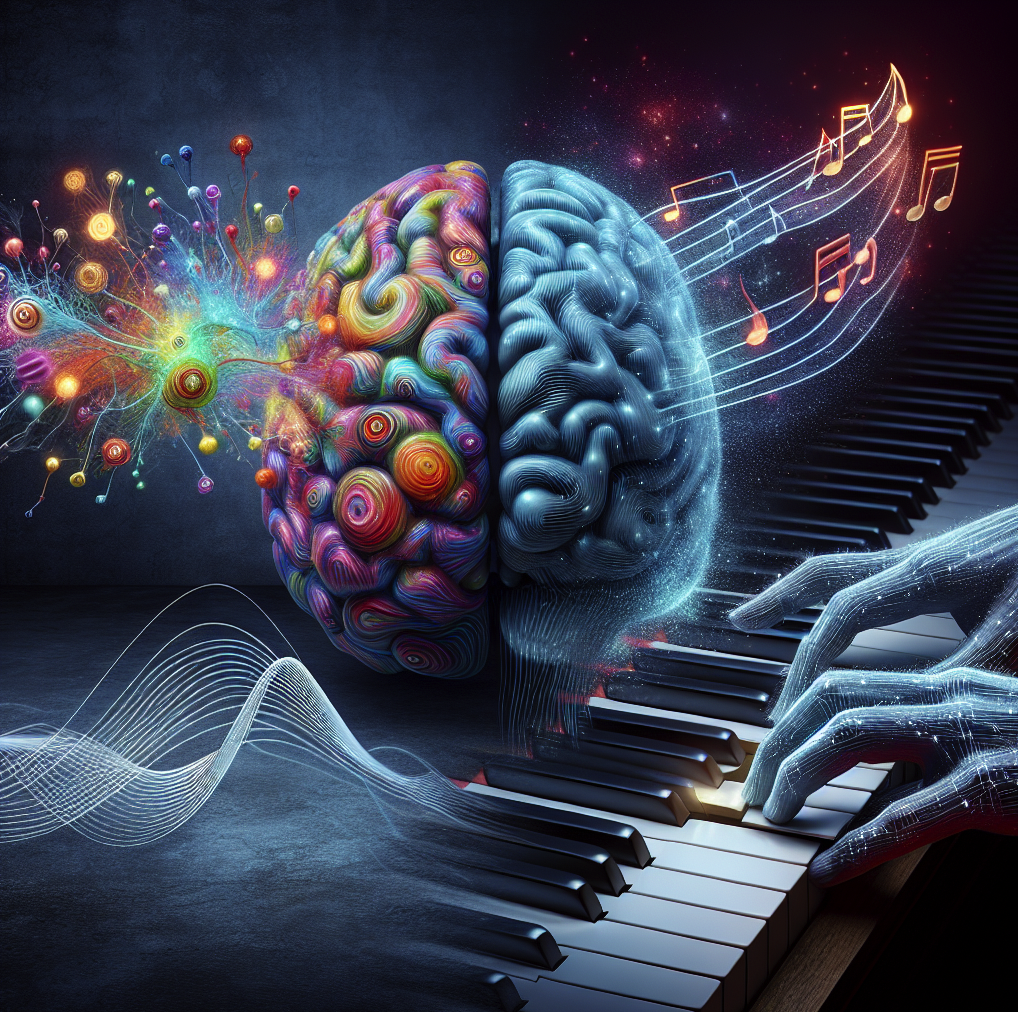Art and music are not only sources of aesthetic pleasure and emotional expression but also powerful tools for enhancing cognitive function. Grounded in decades of neuroscience and psychological research, these activities engage and stimulate the brain in ways that can improve memory, creativity, problem-solving skills, and overall mental well-being.
The Brain’s Response to Art
Visual Processing and Perception
When we observe art, our brains engage in a complex process of visual perception. According to V.S. Ramachandran, a renowned neuroscientist, the brain’s visual cortex decodes and interprets visual stimuli, breaking down the elements of a painting — such as colour, shape, and texture — into meaningful patterns. This process involves both: the occipital lobe, which handles visual input, and the prefrontal cortex, which is responsible for higher-level cognitive functions like decision-making and interpretation.
Ramachandran’s research on the ‘neuroscience of aesthetics’ suggests that the brain’s reward system is activated when we view aesthetically pleasing art. This system, which involves the release of dopamine, the neurotransmitter associated with pleasure, plays a key role in how we experience art emotionally. Engaging with art can enhance mood and promote positive cognitive states.
Art and Neuroplasticity
Art not only affects how we perceive the world but also has a lasting impact on our brain’s structure and function. The concept of neuroplasticity — the brain’s ability to reorganise itself by forming new neural connections throughout life — plays a crucial role here. Pioneered by neuroscientists like Donald Hebb in the mid-20th century, the theory of neuroplasticity suggests that engaging in creative activities like drawing or painting can strengthen and create new neural pathways, leading to improved cognitive flexibility and resilience.
Psychologist Howard Gardner’s theory of multiple intelligences also highlights the role of visual-spatial intelligence, which is engaged when we interact with art. This form of intelligence is crucial for tasks involving spatial judgment and the ability to visualise with the mind’s eye — skills that are important in fields ranging from architecture to engineering.
The Neuroscience of Music
Auditory Processing and Emotional Resonance
Music, like art, has a profound impact on the brain, engaging multiple regions simultaneously. Daniel Levitin, a neuroscientist and author of This Is Your Brain on Music, explains that listening to music involves intricate neural processes. The auditory cortex processes sound, while other areas like the limbic system (responsible for emotion) and the motor cortex (involved in movement) are also activated. This multisensory engagement explains why music can evoke strong emotions and memories.
Research by psychologist and music therapist Oliver Sacks has further shown that music can stimulate memory in profound ways, particularly in individuals with neurological conditions like Alzheimer’s. Sacks’ work demonstrated that music could help patients recall long-forgotten memories, suggesting that musical engagement can have a lasting impact on cognitive function.
Music and Cognitive Enhancement
Engaging with music — whether it’s listening, playing an instrument, or dancing — can also lead to cognitive enhancement. Studies by neuroscientist Gottfried Schlaug have revealed that musicians tend to have larger brain volumes in regions related to auditory processing, motor skills, and spatial coordination. This structural difference is attributed to the rigorous practice and learning involved in mastering an instrument and that reinforces the brain’s neural connections.
Additionally, music has been shown to improve verbal memory, attention, and executive function. A study conducted by researchers at Stanford University found that classical music, particularly compositions with a clear structure, could enhance attention and working memory by engaging the brain’s prediction and sequencing networks.
Why Art and Music Boost Cognitive Function
Stress Reduction and Mental Clarity
One of the most immediate benefits of engaging with art and music is their ability to reduce stress. Neuroscientific research has shown that both activities can lower cortisol levels (the hormone associated with stress) and promote relaxation. Reducing a stress level allows our brain to operate more efficiently, improving cognitive functions such as concentration and problem-solving.
Enhanced Creativity and Problem-Solving
Art and music also foster creativity by encouraging divergent thinking — a cognitive process associated with generating multiple solutions to a problem. Psychologist Mihaly Csikszentmihalyi, known for his work on the concept of ‘flow,’ found that engaging in creative activities can lead to a state of heightened focus and immersion, where the brain is fully engaged and capable of innovative thinking.
Key Takeaways
Art and music are more than just forms of entertainment; they are powerful tools for boosting cognitive function. Grounded in the research of leading neuroscientists and psychologists, these activities engage multiple brain regions, enhance neuroplasticity, and promote mental well-being.
Whether you’re appreciating a painting, playing an instrument, or simply listening to your favourite music, you’re not just indulging in a pastime — you’re actively enhancing your brain’s cognitive abilities. So, the next time you pick up a paintbrush or put on some music, remember: you’re not just enjoying the moment; you’re also investing in your brain’s health and future.



